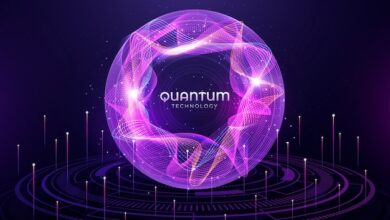Some interesting facts about 5G Technology.

For business insiders, 5G is the next nice innovation of wireless networks. 5G guarantees quicker speed, less latency, once connected to the network, and may connect several devices to the net whereas not inflicting them to cause problems. The 5G network can handle further users, associate an outsized variety of sensors associated with an outsized amount of traffic.
Compared with 4G, the idea of 5G is that the affiliation capability has been greatly improved, and it depends on the demand of the Internet of Things. At that point, the association between all things is sometimes accommodated, for example; aside from the pliability to provide, numerous external links generally stopped. 8K TV and high-end audio are directly connected to the service whereas not requiring video and audio links. Cloud services measurement deeply integrated into all home appliances, and to boot the time of full networking management and voice management of home appliances to boot are complete. The dynamic traffic data on the road and to boot the assortment of people’s data greatly improved. These are the fundamental application eventualities of 5G.
So what we have a tendency to tend to ancient fathom 5G is that the transmission speed is quicker, so however is it faster?
The spectrum that 5G technology can presumptively use is 28GHz and 60GHz, that belongs to actually high frequency (EHF), many on the way aspect the spectrum presently used at intervals the telecommunications trade (such as a mix of.6GHz). though 5G offers very quick transmission speed, up to forty times quicker than 4G network, and incorporates a awfully low delay, the pliability of signal natural phenomenon (that is, the pliability to bypass obstacles) is implausibly restricted, and to boot the transmission distance is unbelievable short, so many base stations have to be compelled to be compelled to be designed to extend coverage.
How 5G Works?
5G operates on three all completely different spectrum bands-
Low-Band Spectrum – On the verge of depletion, the low band spectrum is also remarked as sub 1GHz spectrum. It’s primarily used for LTE and offers sensible penetration and coverage space. Though, the peak data speeds high out at 100Mbps.
Mid-Band Spectrum – It provides lower latency and faster coverage than the low-band and offers races to 1Gbps. However, it fails to penetrate the building equally as its lower counterpart.
High-Band Spectrum is what people see once talking with reference to 5G. it’s very low latency and accelerates to 10Gbps. Sometimes named as “mmWave”, the high-band spectrum has shorter wavelengths. To get multi-gigabit speeds careers are victimising the high-band spectrum with lush higher frequencies, spoken as millimeter waves.
These waves have short wavelengths that are very simply blocked by buildings and supply poor coverage. Hence, 5G needs a cluster of very little (closer to the lowest level) cell sites to transfer the “millimetre waves’ ‘ between transmitters and receivers. As the mmWave signals drop off faster too, cellular suppliers might have to use lower-power (2-10 watts output) base stations rather than fewer, further powerful (20-40 watts output) macrocells to provide the secure multi-gigabit speeds.
The main goal of 5G is to
1.INCREASE SPEED
5G speed super out at 10 gigabits per second.5G is 10 to x100 faster than what you will be able to get with 4G. But what is going on to 5G that has to be compelled to be this fast? According to communication principles, the shorter the frequency, the larger the information lives. means larger data transmission. The use of shorter frequencies [Higher wavelength](millimeter waves between 30GHz and 300GHz) for 5G networks is why 5G are faster. whereas 4G uses frequency between 2GHz–8. For a straightforward user this simply implies that he will transfer and take into consideration content at lighting speed. As per records you may be able to transfer a one GB ar obtainable in simply three seconds!!bAlthough this will be the case ; the speed can vary along side your location and your ISP.
2.REDUCE LATENCY
5G technology offers a awfully low latency rate, the delay between the exploit and receiving data. From a pair of hundred milliseconds for 4G, we’ve a bent to travel right all the way down to one millisecond(1ms) with 5G.Thus data transmission becomes very fast.
3.IOT & 5G
IOT is also a network of things that are connected to the internet and to various things.Suppose you’ve a wise TV, and a wise watch, once they’re connected by iot[with net and every other]they will communicate. 5G guarantees to supply considerably quicker speeds and an additional reliable association to mobile devices than any network before it. That said, 5G cares about the quick net. Exponential growth within the power to hold further data quicker can push alone growth within the net of Things (IoT) technology.
4.5G & HEALTH
5G technology needs plenty of recent base stations – these live the masts that transmit and receive mobile signals. Because there are many transmitters, each will run at lower power levels than previous 4G technology, which suggests that the extent of radiation exposure from 5G antennas is to be lower. So at the time no experiments were very able to prove that 5G causes adverse health effects.






